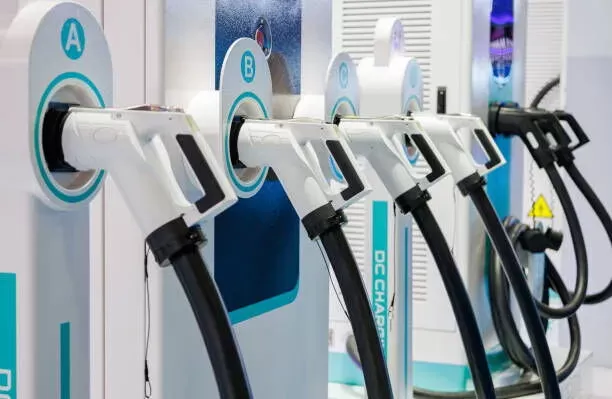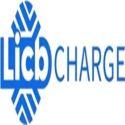Notifications

7 minutes, 12 seconds
-21 Views 0 Comments 0 Likes 0 Reviews

As electric vehicles (EVs) continue their rapid adoption, one demand stands out—faster, more efficient charging. While Level 1 and Level 2 chargers work well for home or overnight charging, they’re not always practical for drivers on tight schedules or long-distance trips. That’s where DC fast charging comes in.
Known as Level 3 charging, DC fast charging offers a dramatic reduction in charge time, making it a vital component of modern EV infrastructure—especially for commercial fleets, highway corridors, and urban fast-charging hubs.
DC fast chargers are the most powerful EV chargers available today, capable of delivering up to 80% of a battery's charge in just 20 to 30 minutes.
Unlike AC chargers, which send alternating current to the vehicle where it's converted to direct current (DC) by the onboard charger, DC fast chargers handle the conversion themselves. They supply DC power directly to the battery, enabling much higher charging speeds.
Level 1 (AC): ~20+ hours for a full charge
Level 2 (AC): 4–8 hours
DC Fast Charging (Level 3): 20–60 minutes (depending on battery size and vehicle specs)
This speed makes DC fast charging ideal for drivers who can’t wait hours to get back on the road.
DC fast charging is not one-size-fits-all. The connector your vehicle uses can vary by region and brand, making compatibility an important factor.
CCS1 (North America) and CCS2 (Europe) combine AC and DC charging in one port.
Widely adopted by most automakers.
Rapidly becoming the global standard due to versatility and high-power support.
Developed in Japan and used by older Nissan and Mitsubishi models.
Typically limited to 50 kW output.
Being phased out in most global markets in favor of CCS2.
Uses a proprietary connector in North America, but supports CCS in Europe.
Tesla is opening its Supercharger network to other EVs (via adapter or CCS compatibility).
Bottom line: Check which connector your EV supports before heading to a DC fast charging station.
Not all EVs can take full advantage of DC fast charging.
Maximum Charging Rate: Each EV has a peak DC charging power (e.g., 100 kW, 250 kW).
State of Charge (SOC): Charging slows down as the battery nears full capacity.
Thermal Management: High-speed charging creates heat—EVs with advanced cooling systems can charge faster for longer.
🔍 Note: Some compact EVs (like the Fiat 500e) don’t support DC fast charging at all. Always verify your vehicle’s specs before using a fast charger.
DC fast charging is typically more expensive than Level 1 or Level 2 charging—but you’re paying for convenience and speed.
Per minute: Charged for the duration of the session.
Per kilowatt-hour (kWh): Billed for the actual energy consumed.
Session or idle fees: Additional charges if the car remains plugged in after charging is complete.
If your EV can only accept 50 kW but you’re plugged into a 250 kW charger billing by time, you may end up paying more for less. Match the charger’s output with your vehicle’s capability for better value.
DC fast charging is best used strategically—not as your everyday charging method. Ideal use cases include:
Charge up in minutes instead of hours during travel stops.
Fast turnarounds are critical for delivery vehicles and ride-sharing EVs.
Running low and need a quick boost to reach your destination? Fast charging is a lifesaver.
For city dwellers without home charging access, public DC fast chargers offer a practical solution.
As battery technology evolves, so does DC fast charging. Key developments include:
Ultra-fast Charging: New stations offering 400–500 kW to support future EVs.
Battery Buffer Systems: Integrated energy storage reduces grid strain and improves efficiency.
Vehicle-to-Grid (V2G): Two-way charging may soon allow EVs to return power to the grid during peak hours.
Network Expansion: Government and private investment is growing coverage along highways, cities, and rural areas.
Before using a DC fast charger, ask yourself:
✅ Does your EV support DC fast charging?
✅ What’s your car’s maximum charging rate?
✅ Is the station’s connector compatible with your vehicle?
✅ Are you being billed in a way that matches your vehicle’s capability?
DC fast charging is transforming the EV experience—making long trips, high-utilization fleets, and urgent recharges faster and easier than ever. But it's not designed for everyday charging routines.
By understanding your vehicle's limits, choosing the right station, and using fast charging strategically, you can enjoy the full benefits without overspending or straining your battery.
The future of mobility is electric—and fast charging is helping to drive it forward.Know more about Google SEO Directory
China EV Chargers EV Charger Manufacturer Smart EV Chargers Electric Car Chargers Electric Vehicle Chargers Electric Car Charging Stations

